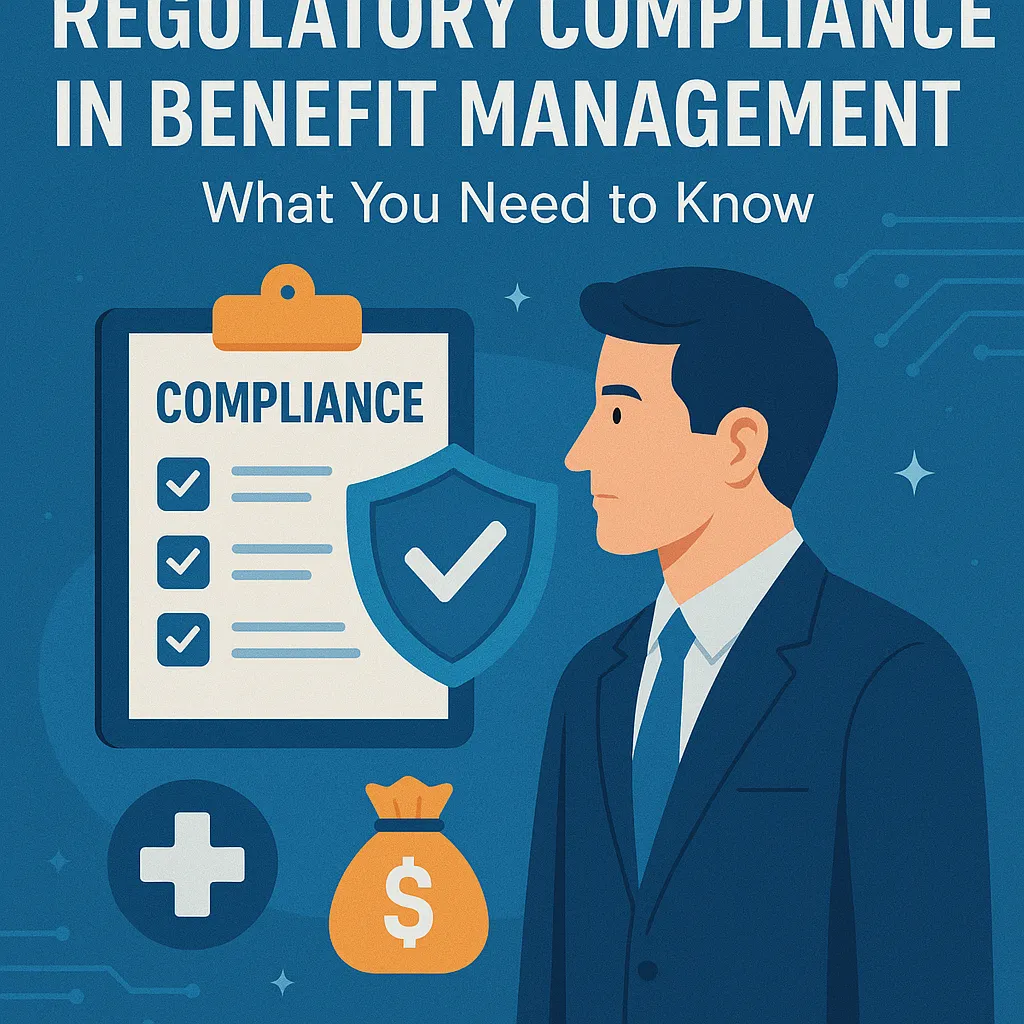Introduction to Benefit Management and Regulatory Compliance
Benefit management is a critical aspect of project management that focuses on identifying, planning, and realizing the benefits of a project. It involves a systematic approach to ensure that the intended outcomes of a project are achieved and that they align with the strategic objectives of the organization. The role of benefit management encompasses several key activities:
- Identification of Benefits: This involves recognizing the potential advantages that a project can deliver, such as increased efficiency, cost savings, or enhanced customer satisfaction.
- Planning and Realization: Benefit management requires careful planning to ensure that the identified benefits are not only achievable but also measurable. This includes setting clear metrics and timelines for realizing these benefits.
- Monitoring and Evaluation: Continuous assessment of the project’s progress towards achieving its benefits is essential. This allows project managers to make necessary adjustments and ensure that the project remains aligned with its goals.
Regulatory Compliance: An Overview
Regulatory compliance refers to the adherence to laws, regulations, guidelines, and specifications relevant to an organization’s business processes. Compliance is crucial across various industries, including healthcare, finance, and construction, as it helps organizations avoid legal penalties, enhance their reputation, and ensure operational integrity. Key aspects of regulatory compliance include:
- Understanding Regulations: Organizations must stay informed about the regulations that apply to their industry, which can vary significantly by region and sector.
- Implementation of Compliance Programs: Developing and implementing compliance programs is essential for ensuring that all employees understand their responsibilities and the importance of adhering to regulations.
- Regular Audits and Assessments: Conducting regular audits helps organizations identify potential compliance gaps and take corrective actions before issues arise.
The Intersection of Benefit Management and Regulatory Compliance
The relationship between benefit management and regulatory compliance is increasingly significant in today’s complex business environment. Here are some key points highlighting this intersection:
- Alignment with Strategic Goals: Effective benefit management ensures that projects not only deliver value but also comply with relevant regulations, thereby supporting the organization’s overall strategic goals.
- Risk Mitigation: By integrating compliance considerations into benefit management practices, organizations can mitigate risks associated with non-compliance, such as financial penalties and reputational damage.
- Enhanced Decision-Making: Compliance data can inform benefit management decisions, helping project managers prioritize initiatives that align with both regulatory requirements and organizational benefits.
- Stakeholder Confidence: Demonstrating a commitment to regulatory compliance within benefit management practices can enhance stakeholder confidence, fostering trust and support for project initiatives.
Understanding Regulatory Frameworks Impacting Benefit Management
In benefit management, compliance with regulatory frameworks is crucial. This section aims to inform compliance officers and project managers about the specific regulations that govern benefit management practices, highlighting the importance of adhering to these regulations to avoid potential pitfalls.
Key Regulatory Bodies
- Internal Revenue Service (IRS): The IRS plays a significant role in regulating employee benefits, particularly in relation to tax implications. It oversees the tax treatment of various benefits, including retirement plans and health benefits, ensuring that they comply with federal tax laws.
- Securities and Exchange Commission (SEC): The SEC regulates the disclosure of employee benefits in publicly traded companies. Compliance with SEC regulations ensures that companies provide accurate information regarding their benefit plans, which is essential for investor transparency and trust.
- Occupational Safety and Health Administration (OSHA): OSHA’s regulations impact benefit management by enforcing workplace safety standards. Compliance with OSHA ensures that employee benefits related to health and safety, such as workers’ compensation and health insurance, are adequately addressed.
Major Regulations Affecting Employee Benefits
- Employee Retirement Income Security Act (ERISA): ERISA sets standards for pension and health plans in private industry, protecting the interests of employee benefit plan participants and their beneficiaries. It mandates reporting and disclosure requirements, ensuring that employees are informed about their benefits.
- Affordable Care Act (ACA): The ACA imposes requirements on employers regarding health insurance coverage. It mandates that large employers provide health insurance to their employees or face penalties, making compliance essential for benefit management.
- General Data Protection Regulation (GDPR): Although primarily focused on data protection and privacy, GDPR affects benefit management by regulating how employee data is collected, stored, and processed. Compliance with GDPR is crucial for organizations that handle personal data related to employee benefits.
Consequences of Non-Compliance
Non-compliance with these regulations can lead to severe legal and financial repercussions, including:
- Fines and Penalties: Regulatory bodies can impose significant fines for non-compliance, which can strain an organization’s financial resources.
- Legal Action: Employees may pursue legal action against organizations that fail to comply with benefit regulations, leading to costly litigation.
- Reputational Damage: Non-compliance can harm an organization’s reputation, affecting employee morale and public perception, which can ultimately impact recruitment and retention efforts.
The Role of Compliance Officers in Benefit Management
Compliance officers play a pivotal role in ensuring that organizations adhere to regulatory standards and best practices. Their responsibilities extend beyond mere oversight; they are integral to the strategic alignment of benefit management with legal and ethical guidelines. Here are some key points that highlight the critical role of compliance officers in this context:
Responsibilities of Compliance Officers in Benefit Management
- Regulatory Oversight: Compliance officers are tasked with monitoring and interpreting relevant laws and regulations that impact benefit management. This includes understanding local, national, and international regulations that govern employee benefits, financial reporting, and data protection [1].
- Policy Development and Implementation: They are responsible for developing, implementing, and updating policies and procedures that ensure compliance with regulatory requirements. This involves creating frameworks that guide project managers in aligning their benefit management practices with legal standards [1].
- Risk Assessment and Management: Compliance officers conduct regular risk assessments to identify potential compliance issues within benefit management practices. They analyze processes and systems to mitigate risks associated with non-compliance, which can lead to financial penalties and reputational damage [1].
- Auditing and Reporting: Regular audits are a crucial part of their role. Compliance officers ensure that benefit management practices are regularly reviewed and that any discrepancies are reported and addressed promptly. This transparency is vital for maintaining stakeholder trust and organizational integrity [1].
Importance of Ongoing Training and Education for Compliance Personnel
- Staying Updated with Regulations: The regulatory landscape is constantly evolving, making it essential for compliance officers to engage in ongoing training and education. This ensures they remain informed about new laws, amendments, and best practices in benefit management [2].
- Skill Development: Continuous professional development helps compliance personnel enhance their skills in risk management, auditing, and regulatory interpretation. This not only improves their effectiveness but also contributes to the overall compliance culture within the organization [2].
- Fostering a Compliance Culture: By prioritizing education, compliance officers can instill a culture of compliance throughout the organization. This involves training project managers and other stakeholders on the importance of adhering to regulations in benefit management, thereby promoting accountability and ethical practices [2].
Case Studies of Compliance Success Stories in Benefit Management
- Company A: Streamlined Benefit Processes: A leading technology firm implemented a comprehensive compliance program that included regular training sessions for its compliance officers and project managers. As a result, they successfully navigated a complex regulatory environment, reducing compliance-related incidents by 40% over two years. This proactive approach not only ensured adherence to regulations but also enhanced employee satisfaction with benefits [3].
- Company B: Effective Risk Management: A healthcare organization faced significant regulatory scrutiny due to its benefit management practices. By appointing a dedicated compliance officer and investing in training, the organization was able to identify and rectify compliance gaps. This led to a successful audit outcome and a renewed commitment to ethical benefit management practices, ultimately improving their reputation in the industry [3].
- Company C: Enhanced Communication: A financial services company established a cross-departmental compliance committee that included compliance officers, project managers, and HR representatives. This collaboration facilitated better communication regarding regulatory changes and compliance requirements, resulting in a more agile response to compliance challenges in benefit management [3].
Strategies for Ensuring Compliance in Benefit Management Practices
In benefit management, regulatory compliance is paramount. Compliance officers and project managers must navigate a complex landscape of regulations to ensure that their benefit management practices not only meet legal standards but also align with organizational goals. Here are actionable strategies to enhance compliance in benefit management:
1. Implement a Compliance Checklist
Creating a comprehensive compliance checklist is a foundational step for ensuring adherence to regulations in benefit management. This checklist should include:
- Regulatory Requirements: Identify and document all relevant laws and regulations that impact benefit management, such as labor laws, tax regulations, and industry-specific guidelines.
- Internal Policies: Ensure that internal policies align with external regulations. This includes reviewing employee handbooks, benefit plans, and communication materials.
- Training and Awareness: Regularly train staff on compliance requirements and best practices. This can include workshops, e-learning modules, and informational sessions to keep everyone informed.
By utilizing a checklist, compliance officers and project managers can systematically address compliance issues and ensure that all necessary steps are taken to meet regulatory standards.
2. Conduct Regular Audits and Assessments
Regular audits and assessments are critical for maintaining compliance in benefit management. These evaluations help identify potential gaps in compliance and areas for improvement. Key components include:
- Scheduled Audits: Establish a routine schedule for internal audits to review compliance with benefit management practices. This could be quarterly or bi-annually, depending on the organization’s size and complexity.
- Risk Assessments: Conduct risk assessments to identify areas where compliance may be at risk. This involves evaluating processes, documentation, and employee feedback to pinpoint vulnerabilities.
- Action Plans: After audits, develop action plans to address any identified issues. This ensures that compliance gaps are not only recognized but also actively managed.
Regular audits not only help in identifying compliance issues but also foster a culture of accountability and continuous improvement within the organization.
3. Leverage Technology and Software Solutions
In today’s digital age, technology plays a crucial role in streamlining compliance processes in benefit management. Utilizing software solutions can enhance efficiency and accuracy in several ways:
- Automated Compliance Tracking: Implement software that automates the tracking of compliance requirements and deadlines. This reduces the risk of human error and ensures that all necessary actions are taken in a timely manner.
- Data Management: Use technology to manage and analyze data related to benefits. This can include employee enrollment, claims processing, and reporting, which are essential for compliance monitoring.
- Reporting Tools: Invest in reporting tools that provide real-time insights into compliance status. These tools can help compliance officers and project managers quickly identify and address any compliance issues.
By integrating technology into benefit management practices, organizations can enhance their compliance efforts, reduce administrative burdens, and improve overall efficiency.
Common Challenges in Regulatory Compliance for Benefit Management
Regulatory compliance is a critical aspect that ensures organizations adhere to legal standards and best practices. However, achieving compliance is often fraught with challenges. Here, we explore some of the typical obstacles faced by compliance officers and project managers, along with strategies to overcome them.
1. Changing Regulations
One of the most significant challenges in benefit management is the constantly evolving landscape of regulations. Compliance requirements can shift due to new laws, amendments, or changes in industry standards. This dynamic environment can create confusion and uncertainty for organizations trying to maintain compliance.
Overcoming the Challenge:
- Stay Informed: Regularly monitor regulatory updates through industry publications, legal advisories, and professional networks.
- Training and Development: Implement ongoing training programs for staff to ensure they are aware of the latest compliance requirements and best practices.
- Utilize Technology: Leverage compliance management software that can help track changes in regulations and automate updates to compliance protocols.
2. Resource Constraints
Many organizations face limitations in terms of budget, personnel, and time, which can hinder their ability to implement effective compliance strategies. Compliance officers may find themselves stretched thin, especially in smaller organizations where resources are limited.
Overcoming the Challenge:
- Prioritize Compliance Activities: Identify the most critical compliance areas that require immediate attention and allocate resources accordingly.
- Cross-Functional Teams: Form cross-functional teams that include project managers and compliance officers to share the workload and expertise.
- Outsource When Necessary: Consider outsourcing certain compliance functions to specialized firms that can provide the necessary expertise without overburdening internal resources.
3. Lack of Awareness
A common obstacle in achieving regulatory compliance is the lack of awareness among employees regarding compliance requirements and their importance. This can lead to unintentional non-compliance and associated risks.
Overcoming the Challenge:
- Awareness Campaigns: Develop internal campaigns to educate employees about compliance issues, emphasizing the importance of adherence to regulations.
- Clear Communication: Ensure that compliance policies and procedures are clearly communicated and easily accessible to all employees.
- Engagement Initiatives: Foster a culture of compliance by engaging employees in discussions about regulatory requirements and encouraging them to voice concerns or questions.
4. Importance of Collaboration
Effective compliance in benefit management requires a collaborative approach between project managers and compliance officers. Each party brings unique insights and expertise that can enhance compliance efforts.
Strategies for Collaboration:
- Regular Meetings: Schedule regular meetings between project managers and compliance officers to discuss ongoing projects, compliance challenges, and updates on regulations.
- Shared Goals: Establish shared goals that align compliance objectives with project management outcomes, fostering a sense of teamwork.
- Feedback Mechanisms: Create feedback loops where project managers can provide insights on compliance processes, and compliance officers can offer guidance on regulatory requirements.
The Future of Benefit Management and Regulatory Compliance
As organizations navigate the complexities of benefit management, the importance of regulatory compliance becomes increasingly paramount. Compliance officers and project managers must stay ahead of emerging trends to ensure that their benefit management practices not only meet current regulations but also anticipate future changes. Here are some key points to consider regarding the future of benefit management and regulatory compliance:
Emerging Trends in Regulatory Compliance
- Increased Scrutiny: Regulatory bodies are intensifying their oversight of benefit management practices. This trend is driven by a growing emphasis on transparency and accountability, particularly in sectors such as healthcare and finance. Organizations can expect more frequent audits and a demand for detailed reporting on benefit allocation and usage. Compliance officers must prepare for this heightened scrutiny by implementing robust tracking and reporting systems to demonstrate adherence to regulations.
- Digitalization of Compliance Processes: The shift towards digital solutions is transforming how organizations manage compliance. Technologies such as artificial intelligence (AI) and machine learning are being integrated into compliance frameworks to automate monitoring and reporting processes. This digitalization not only enhances efficiency but also improves accuracy in compliance reporting. Project managers should consider investing in compliance management software that can streamline these processes and provide real-time insights into regulatory adherence.
Impact of Global Regulations on Local Practices
- Harmonization of Standards: As globalization continues to shape business operations, local benefit management practices are increasingly influenced by international regulations. For instance, organizations operating in multiple countries must navigate a complex web of regulations that may differ significantly from local laws. This can lead to challenges in aligning benefit management strategies with both local and global compliance requirements. Compliance officers should focus on understanding these global standards and how they can be integrated into local practices to ensure comprehensive compliance.
- Cultural Considerations: The impact of global regulations also extends to cultural differences in how benefits are perceived and managed. Compliance officers and project managers must be aware of these cultural nuances to effectively implement benefit management strategies that comply with both local expectations and global standards. This may involve tailoring benefits to meet the specific needs of diverse employee populations while ensuring compliance with applicable regulations.
Proactive Adaptation to Regulatory Changes
- Continuous Monitoring and Training: To stay ahead of regulatory changes, organizations must adopt a proactive approach to compliance. This includes continuous monitoring of regulatory developments and investing in training programs for compliance officers and project managers. By fostering a culture of compliance awareness, organizations can better prepare for and adapt to changes in the regulatory landscape.
- Engagement with Regulatory Bodies: Building relationships with regulatory bodies can provide organizations with valuable insights into upcoming changes and expectations. Compliance officers should actively engage with these entities to stay informed about potential regulatory shifts and to advocate for policies that support effective benefit management practices.
Conclusion
In summary, effective benefit management is crucial for the success of any project, and regulatory compliance plays a pivotal role in ensuring that these benefits are realized in a lawful and ethical manner. Throughout this blog, we have explored several key points that highlight the significance of compliance in benefit management practices:
- Understanding Regulatory Frameworks: It is essential for compliance officers and project managers to be well-versed in the relevant regulations that govern benefit management. This knowledge not only helps in avoiding legal pitfalls but also enhances the credibility of the organization.
- Risk Mitigation: A strong compliance framework helps in identifying and mitigating risks associated with benefit management. By adhering to regulations, organizations can prevent costly penalties and reputational damage that may arise from non-compliance.
- Enhancing Stakeholder Trust: Compliance fosters transparency and accountability, which are vital for building trust among stakeholders. When stakeholders see that an organization is committed to following regulations, they are more likely to support its initiatives.
- Continuous Improvement: Compliance is not a one-time effort but an ongoing process. Organizations must regularly review and update their compliance practices to adapt to changing regulations and industry standards.
- Training and Awareness: Educating team members about compliance requirements and best practices is essential. A well-informed team is better equipped to implement benefit management strategies that align with regulatory expectations.
As we conclude, it is imperative to emphasize the importance of cultivating a robust compliance culture within benefit management. This culture not only safeguards the organization against potential risks but also promotes ethical practices that can lead to sustainable success.
We encourage compliance officers and project managers to remain vigilant and proactive regarding compliance issues. Staying informed about regulatory changes and actively engaging in compliance training will empower your organization to navigate the complexities of benefit management effectively. By committing to these practices, you can ensure that your projects not only achieve their intended benefits but do so in a manner that is responsible and compliant with all applicable regulations.
Find out more about Shaun Stoltz https://www.shaunstoltz.com/about/.
This post was written by an AI and reviewed/edited by a human.



